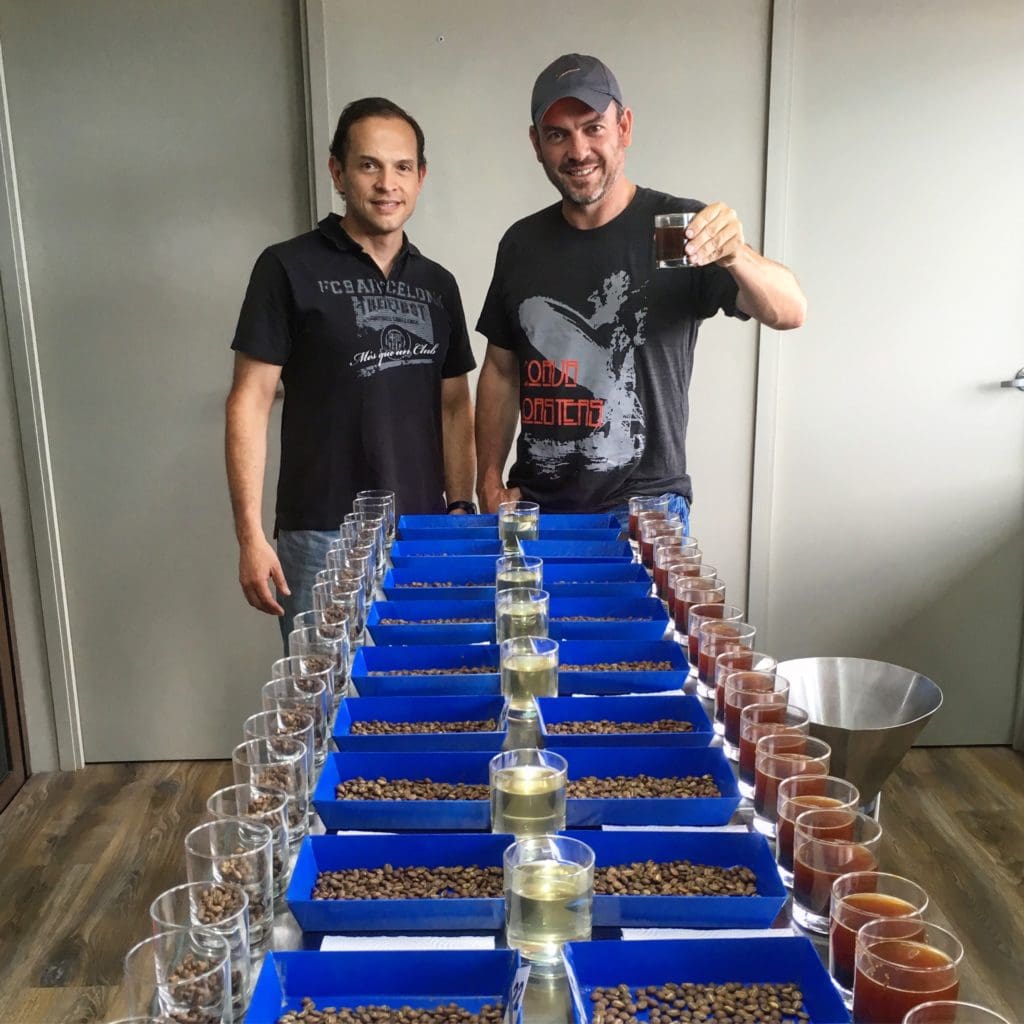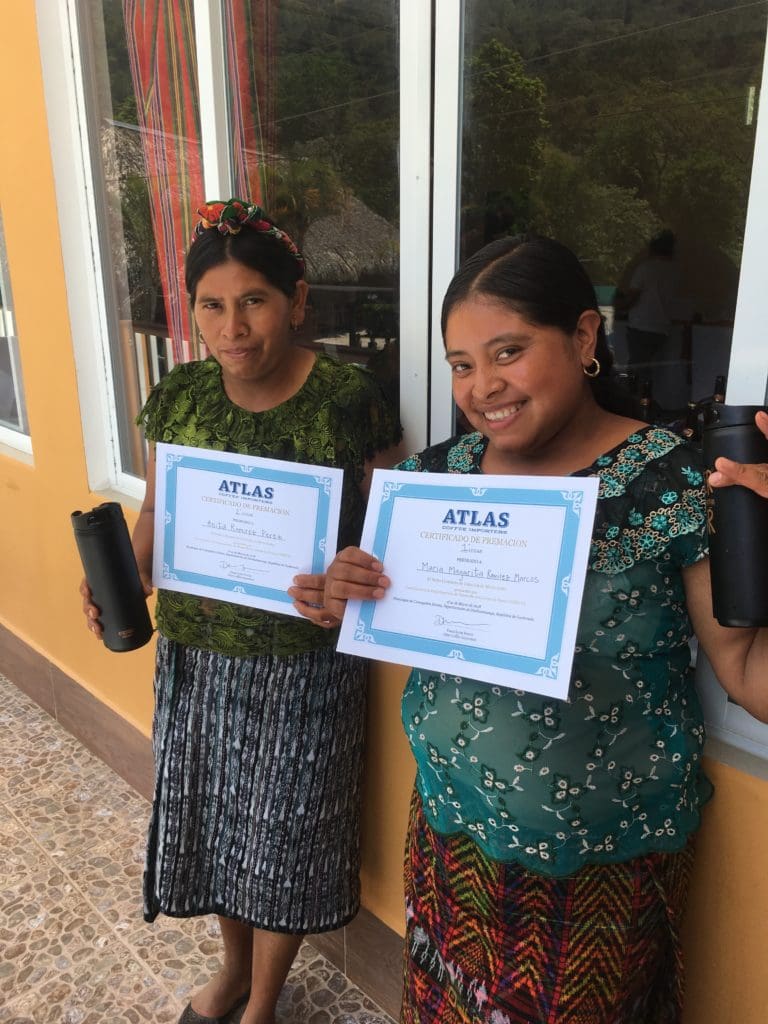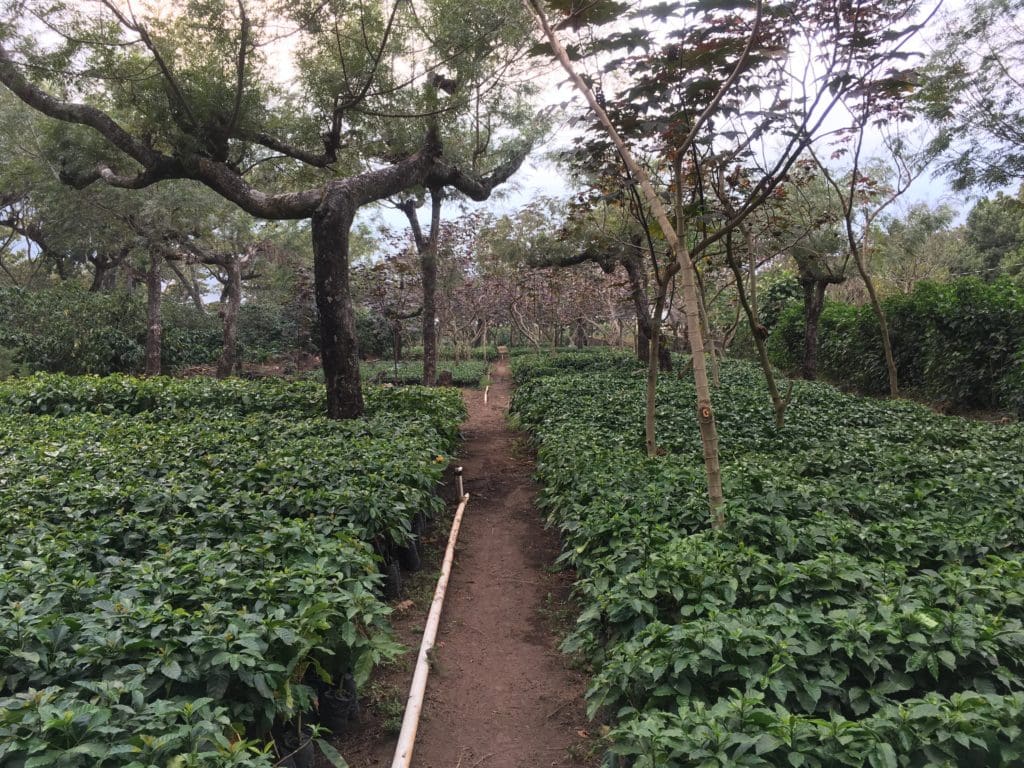We began our Guatemala trip this year by visiting two of our partners and longtime friends, Juan Francisco Pira and Renardo “Nayo” Ovalle. We were also joined by Karla Diab of Westrade Corp who helps us to manage our relationships with these producers and ensures our coffee arrives in the U.S. safe and sound.
Our first few days were spent with Karla and Juan Francisco, the man behind our profile coffee Monja Blanca. In addition to supplying the coffee for Monja Blanca, Juan Francisco owns two estates in the department of Atitlán. The first is Finca La Providencia, which sits at an elevation of 1600 masl and comprises about 90 manzanas, with 45 in production. This year the farm produced nearly 1200 bags of exportable green coffee, the majority of which is Villa Sarchi, Bourbon, Caturra and Catuai. Finca Alto Refugio is Juan’s higher elevation and slightly smaller farm of approximately 50 manzanas. Typica, Caturra and Bourbon make up the farm's production of roughly 800 exportable bags of green coffee. Across the Atitlán region, many producers suffered due to the lack of rainfall in the area during pre-harvesting. This disruptive weather was quite apparent as we drove through the region. We saw entire estates with virtually no cherries, since they did not receive sufficient rainfall to develop. Fortunately, the micro-climates on both of Juan Francisco’s estates (although they are different from one another) helped to bring some moisture to the area, and he still had a productive crop. La Providencia sits on the shores of Lake Atitlán, which not only makes it a stunningly beautiful farm, but also gives it access to water. Any landowner with direct access to Lake Atitlán, has unlimited use of the water. Coffee is not Juan Francisco’s only passion, although he does say it ranks in first place. Juan also loves machinery and is in the process of installing a drip and sprinkler irrigation system for La Providencia. The system will water 2 hectares a day, and then rotate to the next section until all parts of the farm have received water. We look forward to seeing the results of this project next year and long-term, as rainfall and weather patterns continue to be become less predictable.
At the mill level, Juan continues to make improvements at his own Beneficio Santiago La Laguna. This year he added 160 new drying beds, making 640 beds in total. Each bed holds approximately 50 pounds of parchment, and coffee generally dries in 20 days. He also finished a separate wet milling line that is used for micro-lots only. Our Monja Blanca (one of our profile coffees) is processed on the commercial wet milling line, a coffee that comes to us from a variety of smallholder farmers around the shores of the lake. These producers grow Bourbon, Caturra, Villa Sarchi, Typica, and Catuai. Monja Blanca, named after Guatemalan’s national flower, is a reliable SHB coffee that consistently cups in the 85 range. Currently the mill has a capacity to mill 10,000 bags of coffee.
We also spent time with Renardo “Nayo” Ovalle who (with his family) owns several farms, a wet and dry mill in Huehuetenango, and a brand-new state of the art cupping lab in Guatemala City, all of which are part of the Vides 58 brand. Overall washed coffee production from these farms remained very similar to last years, but Nayo and his team increased their production of honey and natural processed coffees due to customer demand. Pacamara production is also up, and this variety is performing quite well on the cupping table.

Renardo "Nayo" Ovalle (L) and Juan Francisco Pira (R) hold a joint cupping for one of their clients. Although they are direct competitors with their micro-lots, they have become fast friends and continue to support one another in their pursuit of exceptional quality.
Since the harvest ended in late March, they have been working on renovations to their Caturra planation. Each year through their renovation program, they choose a different part of the farm to replant. They are also in the process of extending their Pacamara and Gesha lots. Finally, they have added 60,000 new plants to their nursery in the last few months, comprised of Caturra, Gesha, SL-28, Parainema, and Heirloom Ethiopia varieties.
Next, we made the long drive westward to spend a week with CODECH (Coordinadora de Organizaciones de Desarrollo de Concepcion Huista). 2019 marks a decade since our first visit to the group in 2009. Shortly after that visit, CODECH initiated a micro-lot program by classifying producers according to their base association and elevation of their farms. In 2012, we helped the group organize their very first internal cupping competition, which has become an annual event that we look forward to year after year. We invite roaster/buyers from across the US and Canada, and together we spend several days cupping through micro-lots along with the CODECH team. This year we celebrated the 6th competition, with over forty producers submitting coffee.
CODECH is currently comprised of 482 producer members, of which 167 are women. Thirty percent of the producers in the competition this year were also women, which marks the highest participation of female producers to date. Moreover, women achieved first, second, third and fourth place in the competition and we couldn’t be more proud of their hard work and dedication to quality. CODECH functions as four different base associations (ADIPY, ADINTHEC, ADAT and BITENAM). Each base association has their own bodegas, and each producer member belongs to one of them. To which one they belong is usually decided based on where producers have their farms, but each member can ultimately choose which base association they want to sell their coffee to. To keep flavor profiles consistent, CODECH and Atlas try to create blends according to the base associations.

Maria (R) accepting the 1st place award on behalf of her mother (Maria Margarita Ramirez Marcos) and Anita Ramirez Perez (L), 2nd place winner.
One of the biggest challenges for CODECH this year was lack of rainfall. Similar to what was happening in Eastern Guatemala earlier in the year, Huehuetenango also received less annual rainfall than what has been seen historically. Many producers were left with cherries that did not fully develop and turned a blackish color, which they call “semilla quemada”, or burnt been (indicating that they were “burned” by the sun).
After making the 11-hour drive from Guatemala City to Concepcion Huista (the home of CODECH), we wasted no time as we jumped right into a calibration cupping at 6 PM. Although we had several returning roaster/buyers, we also had first time attendees and we wanted to ensure that our group was calibrated with one another prior to the competition commencing. Thanks to the quality control manager Marcelo Torres, the roasting and sample preparation was impeccable. Because of his hard work, our group was able to calibrate quite efficiently. We spent the next three days cupping through the competition lots in tables of 10 to rank the best coffees from all the entries. Between cuppings, we visited various producers across the base associations to see how each one washes their coffee, learn their processes, and ask questions.

Judges of the 2018 6th annual CODECH competition, along with second place winner, Anita Ramirez Perez.
This year, CODECH produced 14 containers total, all of which were exported. Atlas and our customers supported CODECH by purchasing 9 of these containers. We have steadily been increasing our volume with the group, and we are excited to continue to continue and grow our relationship with them.
